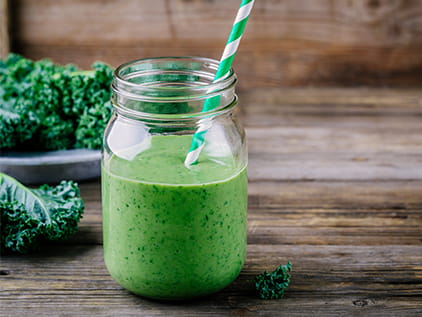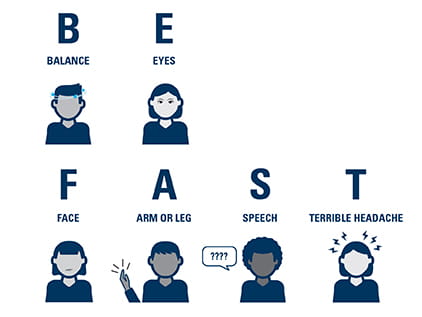April 12, 2023
Heart disease and stroke are among the most common medical conditions. They affect hundreds of thousands of people in the US. By understanding the connection between heart disease and stroke, you can take steps to reduce the risk factors they share.
Our physicians are at the forefront of innovative treatments for heart disease and stroke. Visit a leading cardiologist or primary care physician to learn more about heart disease prevention and stroke prevention. You can decrease your risk of illness and improve your quality of life.
About heart disease and stroke
Heart disease results from improper functioning of the heart. It can be inherited or may develop over time. There are several types of heart disease. Some affect the structure of the heart, such as the arteries or valves, while others disrupt the heart's rhythm. Heart disease is the leading cause of death globally, but those affected often can manage the condition through diet, exercise and medication.
Stroke affects the arteries leading to and inside the brain. It occurs when blood flow to the brain is blocked, depriving cells of oxygen and causing permanent cell damage. This can result in consequences including loss of speech, motor or cognitive abilities. Stroke is the leading cause of death and disability in the US. It is important to manage your risk factors to decrease your chances of having a stroke – and to recognize the signs so you can get help fast should a stroke occur.
The heart and stroke connection
Heart disease and stroke share an important connection. People with heart disease are at a higher risk for stroke, and people with stroke have a higher risk of heart disease. The conditions share many risk factors, including:
- Diabetes
- High blood pressure
- High LDL (bad) cholesterol
- Low HDL (good) cholesterol
- Obesity
- Physical inactivity
- Smoking
Heart disease and stroke are the No. 1 and No. 5 causes of death in the US, respectively. Each year, more than 801,000 American lives are lost due to heart disease, more than 160,000 are claimed by stroke.
The good news is that several healthy-living practices can make a positive impact on your risk for both heart disease and stroke. Remember the motto, "what's good for the heart is good for the head," and follow this advice for heart disease prevention and stroke prevention:

Subscribe to BeWell Connection
Watch for warning signs
Heart disease symptoms and stroke symptoms can vary from person to person. If you notice any of the following in yourself or someone else, seek immediate medical help.
Heart attack symptoms:
- Chest tightness or pain
- Fatigue
- Nausea or indigestion
- Pain in 1 or both arms
- Shortness of breath
Stroke symptoms:
- Facial droop
- Inability to speak or understand
- Loss of vision in 1 or both eyes
- Severe dizziness
- Severe headache
- Weakness or numbness on 1 side

BE FAST: Know the signs of stroke
- Balance: Imbalance, headache, dizziness?
- Eyes: Is vision in 1 or both eyes difficult?
- Face: Does 1 side of the face droop or is it numb?
- Arms: Is 1 arm or leg weak or numb?
- Speech: Is speech unclear or slurred?
- Terrible headache: Did the headache come on within seconds or minutes? Is it one of the worst headaches the person has experienced? If the headache meets these criteria and is accompanied by other symptoms listed above, it may be a sign of stroke. T is also for time. Call 911 right away if someone is exhibiting signs of stroke.

Resources for stroke patients and caregivers
When you or someone you love has a stroke, you don’t have to go through it alone. Programs and support are available through local and national organizations and right here at the health system.




